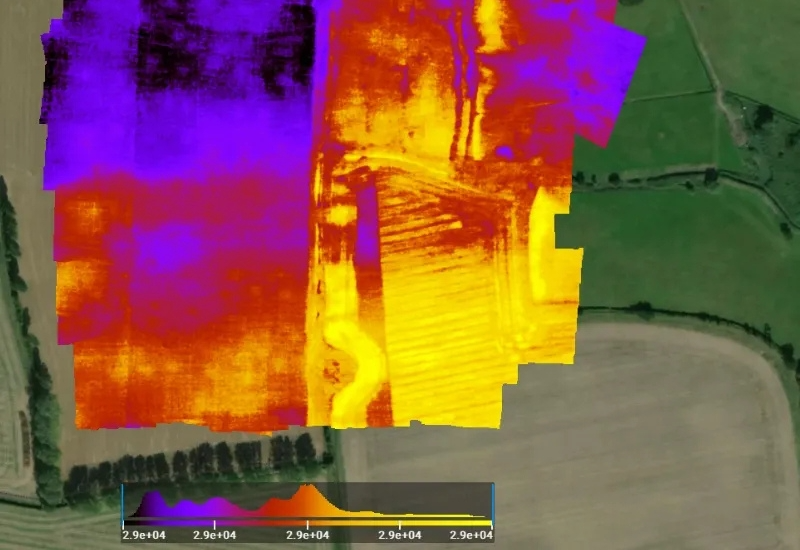
Drone adoption in agriculture is growing rapidly, with new use cases emerging across the sector. Modern farming demands precision, efficiency and data-driven decisions. Our drone solutions help farmers monitor crop health, assess soil conditions, manage livestock with ease and optimise operations – all while saving time and reducing costs.




Drones can be used to collect data about crop stress, such as plant diseases, nutrient deficiencies or water scarcity, helping farmers identify issues and apply treatments quickly. When equipped with multi-spectral cameras, drones assess crop health across fields and orchards, identifying diseases, pests and other problems. Furthermore, soil health can be monitored to assess moisture levels, temperature and soil composition, allowing farmers to compare this data against crop health in specific locations. This data can then be used to create maps and models that inform decision-making and enable more efficient farming practices.
Drones can also be used to spray pesticides and fertilisers over large areas, saving time and money while reducing waste. Furthermore, they can quickly transport small items across farms, cutting transportation costs. As drone technology continues to advance, agricultural applications are becoming increasingly sophisticated, enabling farmers to collect more accurate data and make better-informed decisions.






Drones can be used to collect data about crop stress, such as plant diseases, nutrient deficiencies or water scarcity, helping farmers identify issues and apply treatments quickly. When equipped with multi-spectral cameras, drones assess crop health across fields and orchards, identifying diseases, pests and other problems. Furthermore, soil health can be monitored to assess moisture levels, temperature and soil composition, allowing farmers to compare this data against crop health in specific locations. This data can then be used to create maps and models that inform decision-making and enable more efficient farming practices.
Drones can also be used to spray pesticides and fertilisers over large areas, saving time and money while reducing waste. Furthermore, they can quickly transport small items across farms, cutting transportation costs. As drone technology continues to advance, agricultural applications are becoming increasingly sophisticated, enabling farmers to collect more accurate data and make better-informed decisions.



Drones can be used to collect data about crop stress, such as plant diseases, nutrient deficiencies or water scarcity, helping farmers identify issues and apply treatments quickly. When equipped with multi-spectral cameras, drones assess crop health across fields and orchards, identifying diseases, pests and other problems. Furthermore, soil health can be monitored to assess moisture levels, temperature and soil composition, allowing farmers to compare this data against crop health in specific locations. This data can then be used to create maps and models that inform decision-making and enable more efficient farming practices.
Drones can also be used to spray pesticides and fertilisers over large areas, saving time and money while reducing waste. Furthermore, they can quickly transport small items across farms, cutting transportation costs. As drone technology continues to advance, agricultural applications are becoming increasingly sophisticated, enabling farmers to collect more accurate data and make better-informed decisions.


We're here to answer any questions you may have.